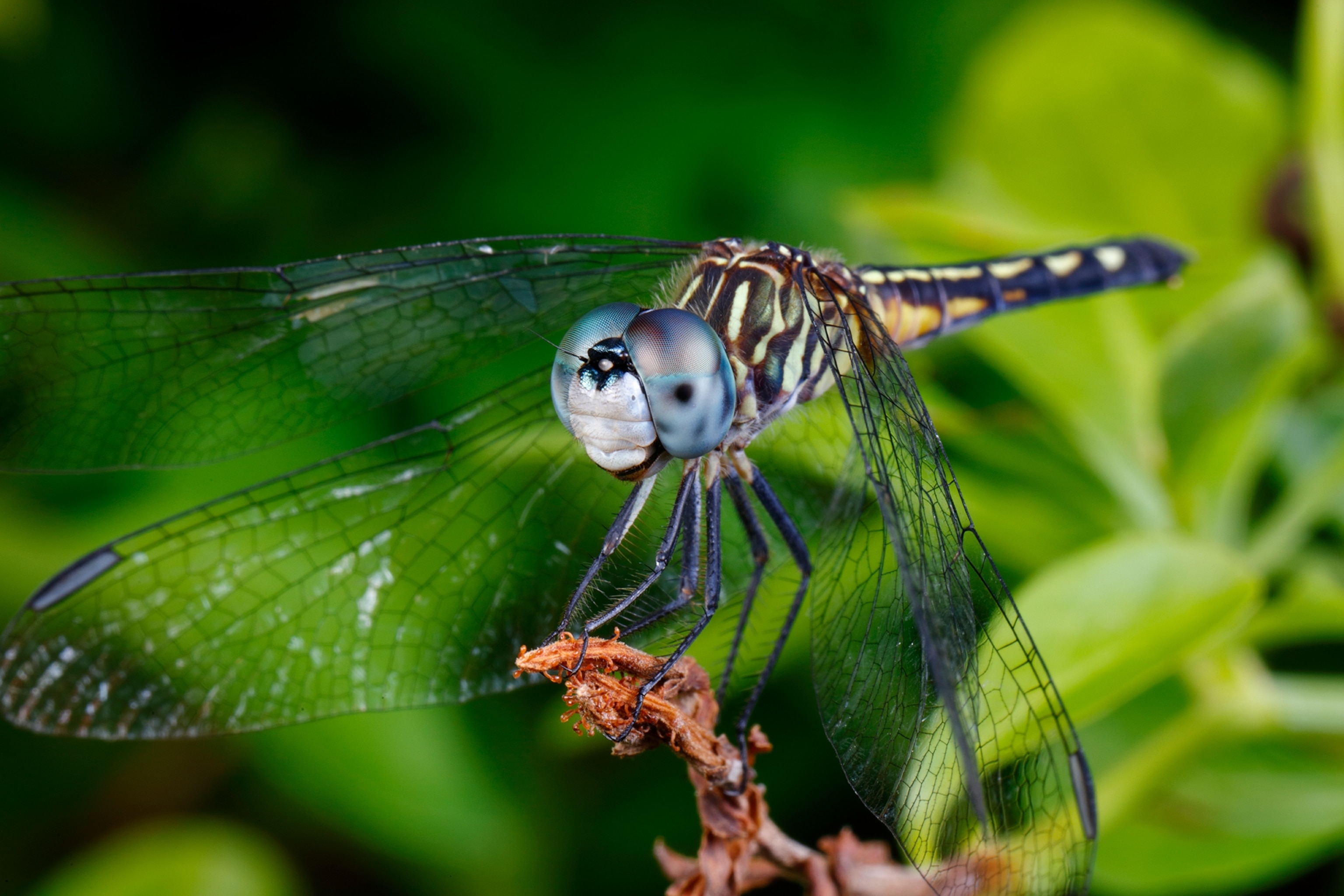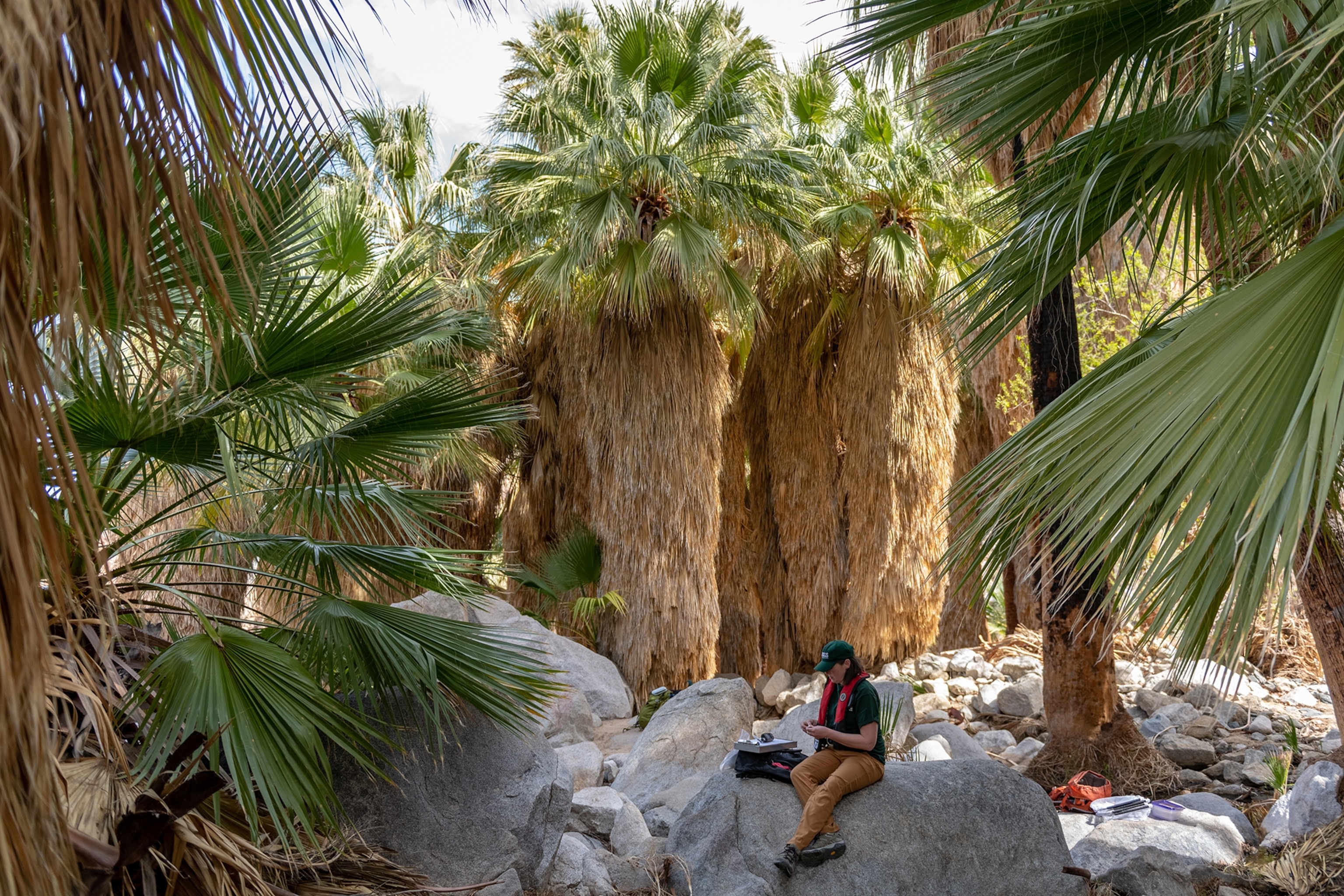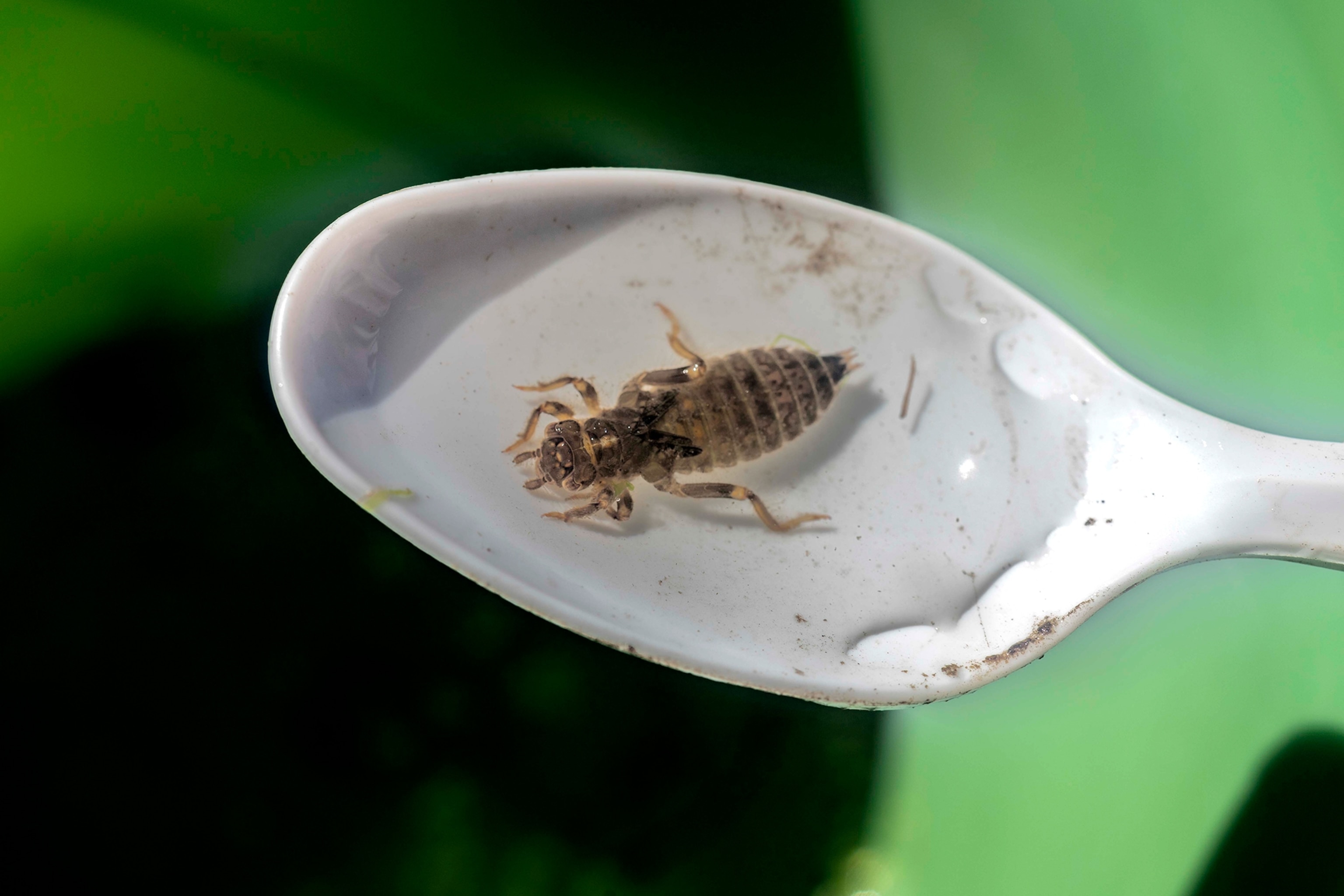Dragonflies can reveal mercury contamination. Here's how.
The insect world’s most successful hunters show how the toxic metal moves through our environment—and how we can reduce our exposure.

Dragonflies, those colorful bugs zooming around like mini-helicopters, are more than just a spectacular sight. These iridescent predators may also be the best way to detect where and how mercury—a toxic metal for both people and wildlife—is accumulating in our environment, a new study says.
Scientists have often used fish or birds as harbingers of mercury contamination. But dragonflies are an even better indicator. For one, their larvae develop in almost any type of water body, including tiny desert potholes or muddy marshes that can’t support larger animals. Plus, it’s cheaper, easier, and more accurate to analyze mercury in insect larvae than it is in fish or birds.

The World Health Organization lists mercury as one of the top 10 chemicals of major public health concern, and the metal exists in our atmosphere at a concentration of about 450 percent higher than natural levels due to humans' industrial activities, including coal burning and cement production. (Read about an effort to track mercury in the Amazon.)
Since 2009, more than 7,000 citizens and researchers have collected dragonfly larvae from 150 U.S. national parks as part of the Dragonfly Mercury Project, which is run by the U.S. Geological Survey and the National Park Service. This community science effort, now the nation’s largest assessment of mercury contamination, has analyzed tens of thousands of dragonfly larvae.
In doing so, scientists have discovered surprising patterns in how mercury moves through the landscape, including where concentrations of this harmful metal are the highest.
This successful research effort shows dragonfly larvae should be the gold standard for detecting mercury, says Collin Eagles-Smith, a USGS research ecologist and science lead for the Dragonfly Mercury Project who co-authored a study on the topic recently in the journal Environmental Science and Technology.
YEAR-LONG ADVENTURE for every young explorer on your list
FREE limited-edition frog drawstring bag with every Nat Geo Little Kids Book Bundle subscription
“There's a global effort to reduce mercury emissions, and dragonflies are helping us track how ecosystems respond to those reductions.”
A health hazard in our midst
“There are no safe levels of mercury,” says Alexandra Scranton, director of science and research at Women's Voices for the Earth, a nonprofit working to reduce and eliminate toxic chemicals. “Yet we all have it in our bodies. We have unfortunately contaminated our entire world.”

Once mercury moves from the air into our waterways through rain or snow, it bioaccumulates up the food web, from insects to birds to fish, which means animals at the top of the food chain, like humans, are particularly at risk.
People are mostly exposed by eating certain large predatory fish, such as swordfish, shark, or marlin. “The biggest hazard is the effect on the brain. Mercury is a potent neurotoxin—just very, very damaging to brain cells,” says Scranton.
Studies have found less gray and white matter—literally smaller brains—in people with higher mercury levels. High levels of mercury in the blood are linked to an increased risk of Alzheimer's disease in older adults, as well as an elevated risk of miscarriage in pregnant women. (Learn how mercury pollution can change bird songs and feathers.)
“Mercury doesn’t break down into something less toxic,” Scranton says. “It’s going to be cycling through our environment for a long time”—which is exactly we need to zero in on where it’s most dangerous.
Group effort to track mercury
There are about 470 species of dragonflies in Canada and the continental U.S., all of which boast nearly 360-degree vision, serrated teeth, and impressive flying skills as they zip around in search of prey.
During the insects' two-year larval stage, they eat loads of mercury-contaminated aquatic insects.
Community scientists can easily capture the numerous larvae—each female lays up to a thousand eggs—anywhere there is water.
All larvae samples are then shipped to a lab in Corvallis, Oregon, where scientists analyze their tissue.
From 2009 to 2018, the project found that roughly one-third of 457 sites had no or low levels of mercury, while over half had moderate levels. Eleven percent of sites had high-hazard levels of mercury, and one percent—including a spot in Yellowstone Lake—fell into the severe hazard category.
This research also showed mercury concentrations are highest in dragonfly larvae from rivers and streams throughout the U.S. rather than in still water, like wetlands or lakes. (Read why this female dragonfly plays dead to avoid mating.)
Larvae in desert regions have the highest mercury concentrations, while the Great Plains have the lowest. To find out why, in the latest study, researchers tracked mercury isotopes—or different forms of mercury—in larvae to evaluate how the metal moves from the atmosphere into waterways.
For instance, the team discovered that surprisingly, the metal begins accumulating more quickly in waterways and the food web in arid places like the Great Basin or the Mojave Desert. This is because, in the absence of tree cover, mercury in rain or snow enters directly into waterways. Plus, the metal accumulates in the food web more quickly when sediments dry up and then get wet again.
But in wetter, forested areas like the U.S. Northeast, mercury is deposited from the air into leaves, which carry the toxin to the ground when they fall. Mercury then is stored in the soil before it seeps more slowly into waterways. That means it could take years or decades for mercury to move from the air to the food web in forested areas.
How to reduce mercury exposure
“What's driving mercury in Nebraska is different than what's driving mercury in New Mexico,” Eagles-Smith says.
This new information will help communities “better understand the timeframe of recovery,” he says, and help keep harmful toxins out of the environment and our bodies. (Read how community science increased during the pandemic.)
The best way to reduce mercury exposure is to be cautious about which fish you eat. Choose anchovies, sardines, or salmon over halibut or orange roughy, both of which eat other fish. Also, take special care when handling fluorescent lamps, low-energy light bulbs, and batteries—if broken, the mercury inside can be absorbed through the skin.
Scientists also encourage the public to participate in the Dragonfly Mercury Project. After all, dragonfly larvae are fun to collect.
“They’re kind of a cultural icon,” says Colleen Flanagan Pritz, an ecologist with the National Park Service and project program manager.
Everyone from schoolchildren to retirees enjoy watching these lovely insects, she says.







